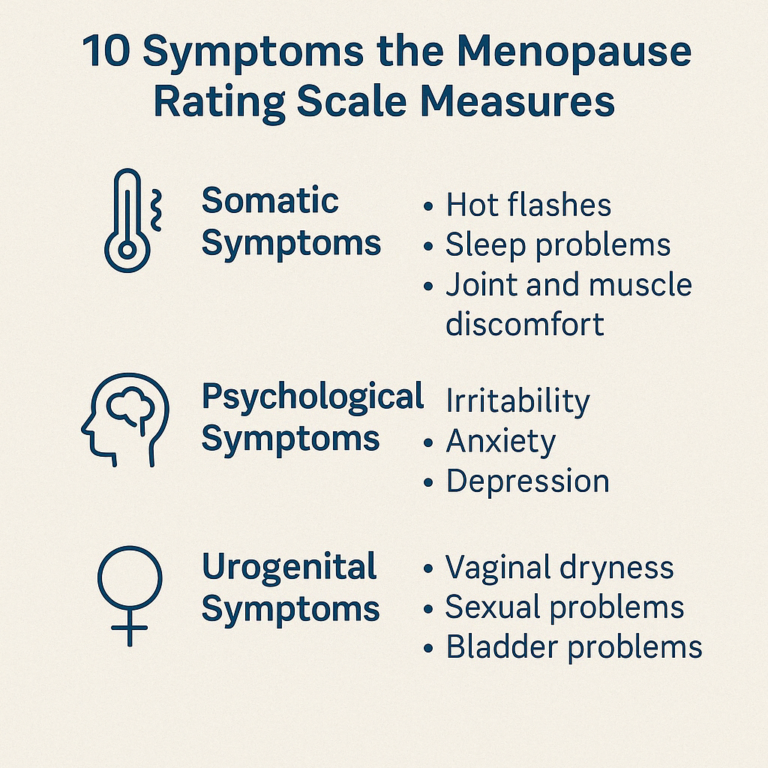
Menopause symptoms are real. But too often, they are underreported, underdiagnosed, and left out of structured care.
The Menopause Rating Scale (MRS) helps change that.
It offers a clear, clinically validated way to measure the severity of menopause symptoms, so conversations can move from vague descriptions to actionable care planning.
Here’s why the MRS matters—and what it measures.
What Is the Menopause Rating Scale (MRS)?
The Menopause Rating Scale is a 10-question tool that tracks the most common physical, psychological, and urogenital symptoms women experience through perimenopause, menopause, and post-menopause.
Each symptom is rated on a scale from 0 (none) to 4 (very severe).
The scores provide a baseline that can be monitored over time to guide diagnosis, treatment decisions, and track care outcomes.
📌 Reference: NIH Menopause Rating Scale Validation Study
The 10 Symptoms the MRS Measures
The MRS groups symptoms into three key categories:
1. Somatic Symptoms (Physical Changes)
-
Hot flashes and sweating episodes
-
Sleep disturbances
-
Joint and muscle discomfort
These symptoms can impact daily function and often drive women to seek help when they become severe.
2. Psychological Symptoms (Mood and Cognitive Shifts)
-
Depressed mood
-
Anxiety or nervousness
-
Irritability
Psychological symptoms are sometimes misdiagnosed as isolated mental health issues when they may actually be hormonally driven.
3. Urogenital Symptoms (Pelvic and Sexual Health)
-
Vaginal dryness
-
Bladder problems (urgency, leakage)
-
Sexual dysfunction
These symptoms are common but rarely brought up unless a structured tool like the MRS prompts the conversation.
Why the MRS Matters
The Menopause Rating Scale isn’t just about scoring symptoms. It helps bridge the gap between what women experience and what providers can respond to with targeted care.
Benefits of using the MRS include:
-
Turning lived experiences into measurable data
-
Helping clinicians personalize care plans based on specific symptoms
-
Giving women a baseline to monitor changes over time
-
Supporting conversations that might otherwise be overlooked
Tracking symptoms with the MRS also allows women to evaluate how treatments like HRT, lifestyle changes, or alternative therapies are impacting their quality of life.
A Real Example
A woman approaching menopause reported that her lab work looked normal. She was told her symptoms were “part of getting older.”
But her MRS score told a different story.
It revealed a significant rise in psychological and sleep-related symptoms. That insight led her care team to pursue further hormone testing and stress assessment, and her care plan was updated before the symptoms worsened.
The numbers told the story. The care team listened. And her health trajectory improved because of it.
Remember…
Menopause is not invisible. It should not be treated like that.
The Menopause Rating Scale gives women and providers a structured way to quantify the experience, advocate for care, and track real improvement over time.
If you are entering perimenopause or experiencing menopause-related symptoms, ask your provider if they are using the MRS. If they are not, ask why not.
Real health care starts with honest conversations and fundamental tools. Learn more here


